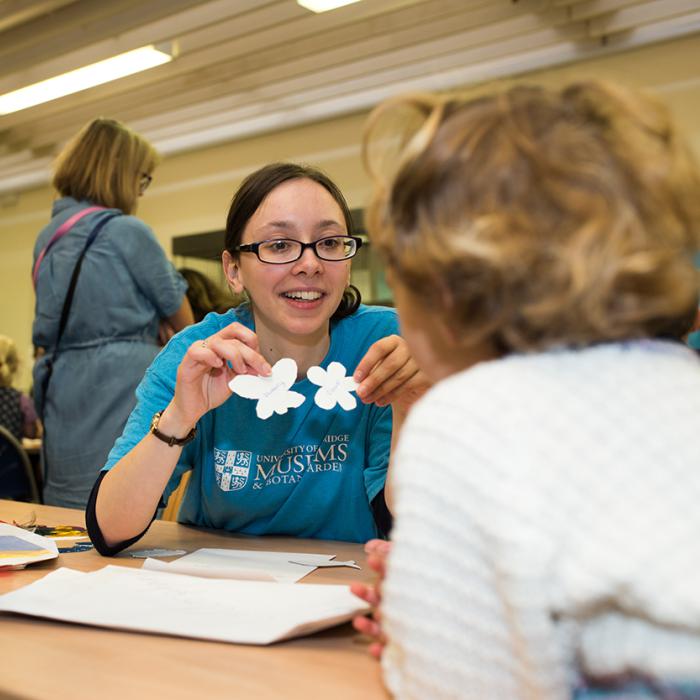We offer facilitated workshops and self-led visits. There is no charge for our school sessions, but we welcome donations to support the Museum learning programme (recommended donation of £3 per child). Get in touch with the Museum Education Coordinator to discus your visit museumeducation@esc.cam.ac.uk
Self-led visits
Led by you, available all day Monday – Friday during term time.
Artist Kaitlin Ferguson shows you how to make your own ichthyosaur using one of Mary Anning's fossils in the Sedgwick Museum’s collection as inspiration.
There are two different makes that you can try depending on how much time you have.
Make one: Ichthyosaur template
Make two: salt, flour and water to make salt dough (or plasticine or playdough)
To make your zine you will need:
Gravel Hunters is an educational resource that aims to encourage budding explorers of all ages to discover fossils for themselves on their doorsteps. From gardens to car parks and driveways, fossils can be unearthed in flint gravel from all sorts of environments - all you need to do is collect them.
This resource gives examples of some of the most common fossils found in flint gravel.
About the Session
This set of activities covers aspects of the Year 5 national curriculum unit "Earth and Space", using objects from the Whipple Museum to explore:
The solar system
Terrestrial, celestial and planetary globes
Space science today
Duration: Can be booked as:
It is really unusual for a palaeontologist (scientist who study fossils) to find a complete skeleton with all the bones in the right place. We are more likely to find only a few bones or a jumbled up skeleton.
Putting a skeleton back to together when you know what the animal looks like can be a challenge, but imagine how hard that becomes when there are no more of those creatures alive for you look at. It is a bit like trying to put a jigsaw puzzle together when you don’t have the photo on the box as a guide.
How does burning fossil fuels threaten Antarctic marine life?
This experiment demonstrates the link between increasing carbon dioxide levels and ocean acidification and freshening oceans. Freshwater and more acidic water in the oceans make life harder for Antarctica’s marine animals.
The experiment and video were made by Nick Barrett. Nick is a PhD student at the University of Cambridge Earth Science Department and The British Antarctic Survey investigating the resistance of Antarctic marine species to predicted freshening and lower salinity in the Southern Ocean.
Meet the Deep Earth Research Team and find out why and how they study the Deep Earth, and what the team are currently working on.
Visit the Deep Earth Explorers online exhibition to find out more about their exciting research to find answers to the many open mysteries we still don't understand about our planet. The exhibition includes interactive models of the layers of the Earth.
When an earthquake occurs energy spreads outwards, shaking the ground as it goes. Just like when you drop a pebble into a pond and see the ripples spreading outwards on the surface, the energy from an earthquake also spreads outwards.
In this experiment you will find out about the different types of earthquake waves.
Download the instructions and information sheet
When an earthquake occurs near a town or city it can cause lots of damage. In areas where there are lots of earthquakes, engineers must design earthquake-proof buildings which sway with the motion of the earthquake, rather than cracking and breaking. But what kind of structures do you think make good earthquake-proof buildings?
In this experiment you can make some earthquake-proof buildings of your own, using cocktail sticks and marshmallows. Give them a shake on some wobbly jelly to simulate an earthquake, and see how well the hold up!

